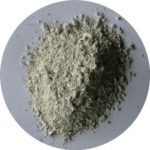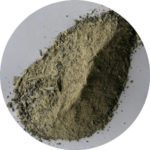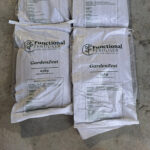P.W.Burton
The reason for excess Nitrate entering waterways and aquifers is that too much ‘bag N’ is being applied to pastures.
The total amount being applied varies depending on the source with a figure of 750,000 tonne regularly appearing.
Nitrogen is sold as a growth stimulant, with each kilogram of nitrogen providing extra kilograms of pasture with the response varying depending on the time of the year when applied.
MAF data going back as far as the 1970’s shows two things that are important in this discussion. Firstly, the time when the response to applied N is greatest is when pasture is naturally growing rapidly i.e. September, October, November.
The second important point is that after the burst of growth provided by nitrogen there is a depression in growth, usually due to suppression of clover.
This means that the application of N in spring is of little, if any, benefit as growth at that time already exceeds animal requirements.
Further boosting of growth at this time leads to clovers being shaded, and from early November onwards it is clover that naturally outperforms grasses.
Nitrogen applied in late autumn and winter is usually uneconomic, due to lessened response, and it is prone to leaching during periods of wet weather.
The summation of the hundreds of trials undertaken by MAF were that the use of nitrogen fertiliser on permanent grazed pastures was seldom worthwhile.
The most common reason given for the seemingly widespread refusal to discuss a reduction in ‘bag N’ applications is that it would lead to fewer animals resulting in lower farm production and causing a severe financial recession in rural New Zealand.
Under the current mainstream regular applications of nitrogen, pasture growth has steadily declined from a high of 18,000kg in the late 1970’s, to at best 15,000kg DM/ha now, with speed of decline accelerating.
It is therefore just a matter of time before pastoral farming becomes uneconomic. Another 5 years should be enough to see a severe contraction, particularly as the costs of production and compliance steadily increase.
There’s always an upside to extreme challenge, and the farming community has always found ways to prevail. The first step is to drag the nitrogen issue out of the shadows for rigorous debate. Much better that than have its use regulated.
There are a group of farmers already ahead of the game. They have steadily increasing annual pasture production, less pest and disease pressure, higher per animal production and markedly lower overall costs.
The ten years of measured monthly pasture production from the Berryman property close to Edgecumbe show steadily increasing pasture performance over that time, with total farm production to match.
It’s an intensive dairy operation with production in excess of 1300kg MS/ha and 500kg/cow, with the herd wintered on the property. Pasture production for the twelve months ending 30th May this year was 19,278kgDM/ha, down from 21,151kgDM/ha last season.
The farm is not reliant on fertiliser nitrogen and less than 30kg/ha is applied annually. Typically, a small amount is applied in autumn to help transition the pasture from summer to a more grass dominant sward.
A little sulphate of ammonia is sometimes applied in mid-winter to encourage early season growth. It’s a pragmatic system with nitrogen fertiliser regarded as a strategic input, however at an average daily growth rate of 55kgDM/ha its use is seldom considered.
Nitrate N concentrations, when measured as part of a project comparing the property with a high N input property, showed losses to be 70% less.
The cost of the total nutrient package is no higher than that of a conventional nitrogen dependent programme growing 15,000kgDM/ha per year.
The soil fertility system used is Functional Fertiliser’s ‘total nutrient package’ based on CalciZest and DoloZest.
Both products contain a wide range of selected beneficial fungi and bacteria. This results in nutrient cycling more rapidly, and improved physical soil structures allowing plants to root deeper, extracting more nutrient including nitrogen before being lost to groundwater. For more information call Peter on 0800 843 809.




